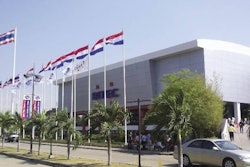
December and January are months when India's demand for chicken rises. With three major festivals — Christmas, New Year and Pongal — consumption rises by some 25% over the period.
But beyond this seasonal spike, poultry consumption in India is rising. Between 1991 and 2006, total domestic consumption increased from 420,000 metric tons to 2 million metric tons, while per capita consumption rose from 0.5kg to 1.8kg over the period.
Over recent years, poultry meat has been the fastest-growing animal protein in India, increasing at a compound annual growth rate (CAGR) of 11% between 1991 and 2006, notes the USDA. It was followed by Brazil, which expanded at 7.7%, and the USA at 2.8%.
But a comparison of Brazilian and Indian poultry consumption (1.8kg per capita) shows that India, despite its impressive growth rates, still has a long way to go. In Brazil, per capita consumptions stood at 36.1kg in 2006, while in the USA it was 46.4kg.
Major player
India has the biggest livestock population in the world, adding some 4% to overall GDP and 27% to agricultural GDP. The poultry industry has been one of the key contributors.
The poultry industry's recent strong performance has outstripped that of the economy as a whole and, according to the country's Agriculture Ministry, the sector is worth over US$6.5 billion.
India has become the fourth-largest producer of eggs in the world and the fifth largest of broilers, producing some 2.3 million metric tons of meat and 47 billion eggs. The country has 1.5 billion broiler birds spread across 150,000 farms.
Poultry meat occupies a favourable position in India, being free from religious restrictions. Additionally, it is available year-round, which is not the case for all animal proteins in all parts of the country, notes co-operative financial services provider Rabobank. However, there remain a number of factors holding the sector back. For many, poultry meat is still expensive.
Poultry meat is more expensive than beef and buffalo meat, for example. Buffalo meat tends to be 40% cheaper than poultry and is considered inferior for religious reasons. However, this is changing.
As poultry meat becomes cheaper, both in absolute and relative terms, and there is greater appreciation of its health and convenience benefits, demand is forecast to keep growing. Both demand and supply-side factors are predicted to bring about a growth rate of 12-15% in the Indian poultry industry over the coming years.
Societal change
Indian society is changing and is shifting from the countryside to towns. By 2010, 32% of the Indian population, which currently stands at 1.12 billion and is increasing by 1.6% annually, is expected to live in urban areas. Urban dwellers tend to consume more poultry meat than their rural counterparts.
Cultural changes are occurring at more than simply the geographic level. A greater appreciation of healthy and hygienic food is bringing poultry to the fore and India's large vegetarian population is increasingly converting to a non-vegetarian diet. This, in part, is thought to be occurring as a result of more overseas travel.
With higher levels of disposable income, poultry meat is increasingly seen as less of a luxury product and more as a daily staple.
Retail
Unsurprisingly, the way that poultry meat is purchased is also undergoing change. The country's retail sector has been largely unorganised, with wet markets accounting for nearly 95% of sales. The average poultry purchase is fresh chicken meat, mostly slaughtered in small establishments.
Importantly, production costs are coming down. This is mainly a result of increasing integration of the poultry supply chain.
Alongside this, rising income levels mean that poultry meat is seen ever less as a delicacy and is increasingly a staple of the middle-class diet.
Only 2% of poultry products is sold via supermarkets or own stores. Organised retail is expected to expand by 3-10% by 2010, resulting in development of cold chain, freezers and other back-end infrastructure.
The sale of processed chicken is thought to be around 30,000 metric tons, worth US$50 million, and estimated to be growing at 15-20% per annum. There is increasing investment in processing plants and a growing offering of value-added ready-to-cook snacks.
Some 70% of the processed-chicken market comprises chilled or fresh chicken, with frozen chicken accounting for most of the remainder. Value-added chicken accounts for a mere 5%. This move, albeit gradual, towards higher-value products has allowed integrator Suguna, for example, to introduce eggs with extra vitamin E and organic selenium.
Production
As demand for chicken increases, so production is gradually changing. The industry varies from region to region and, while the majority comprises relatively small operations, large-scale operations are increasingly important.
India primarily imports its grandparent stock but there are domestic companies producing two or three pure lines. On hatching farms, both natural mating and artificial insemination are practiced and parent breeder farms are largely owned by companies.
In southern India, contract farming tends to be prevalent, with farmers provided with day old chicks (DOCs), feed, medicines and a growing fee. Independent operators in the unorganised sector purchase DOCs from local hatcheries, for example Suguna, Pioneer and Venkateshwara.
Few companies have modern processing plants. The amount of broiler production undergoing processing is still only some 10% but this is growing by 15-20% annually.
Of increasing importance are integrated poultry companies that control all aspects of the supply chain. The level of control can be direct or indirect. This approach has gained prominence mainly in the south and west of the country.
Expanding domestic production and increasing integration has pushed poultry meat prices downwards and stimulated consumption. Integrators have established price leadership in their markets by reducing the number of middlemen and forcing wholesalers and retailers to reduce their margins.
Farms and feed
Unsurprisingly, farm sizes are growing. Among the country's larger broiler units, those with fewer than 5,000 birds are rare. Layer farms with flocks of 10,000 to 50,000 are also increasingly common. Smaller producers are at more of a disadvantage due to lack of credit and an inability to negotiate favourable trading terms.
Those sectors providing inputs for the poultry industry have not always been able to keep pace with its growth. An example of this is the feed industry.
Maize is the primary source of energy for the Indian poultry industry and constitutes 60% of compound feed, while soyabean is the main source of protein, and around 40% of production is consumed by the industry. Most integrators now have their own captive feed facilities producing mashed and pelleted feed.
However, maize has remained a relatively small crop in the country, which has led to supply shortages. Additionally, while the country may be reasonably competitive in producing maize, storage and distribution costs are high.


















